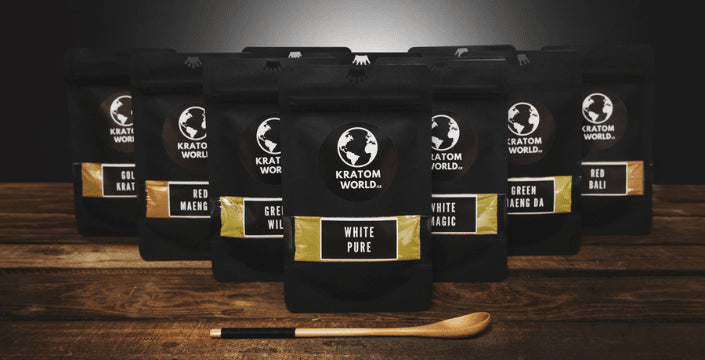Your Cart is Empty
Shipping is free on orders over €60!
Shipping is free on orders over €60!

In the search for natural health alternatives, more and more people are discovering the benefits of Kratom and its antioxidant properties. This Southeast Asian plant has been used for its medicinal properties for centuries and is now gaining popularity worldwide.
Find out what kratom is, how kratom works as an antioxidant , and how it can contribute to your overall well-being. Discover how this wonderful plant can become a powerful ally in your pursuit of a healthier, more balanced life.
Kratom, scientifically known as Mitragyna speciosa, is a tropical tree that grows primarily in countries such as Thailand, Indonesia, Malaysia and Papua New Guinea. Its leaves are traditionally used by indigenous communities in the region for their stimulant and medicinal properties. Kratom contains several chemical compounds including:
These chemical compounds in kratom interact with opioid receptors in the brain, which may explain some of kratom's effects on pain relief and mood. However, it is important to remember that Kratom is not FDA approved and that you should use it carefully and responsibly.
The antioxidants contained in kratom provide a number of health benefits thanks to their ability to combat oxidative stress and protect the body's cells.
Kratom, thanks to its antioxidants such as epicatechin and catechin, offers cell protection by neutralizing free radicals and reducing oxidative stress. This helps maintain the health and proper functioning of cells in the body.
Oxidative stress can damage cells and contribute to premature aging and the development of disease. The antioxidants contained in kratom, such as epicatechin, help reduce oxidative stress by neutralizing free radicals and protecting DNA and other cellular structures.
Catechin, an antioxidant found in kratom, is associated with anti-inflammatory properties. This means it can help reduce inflammation in the body, which is beneficial for overall health and can help reduce symptoms associated with inflammation, such as pain and discomfort.
Kratom's antioxidants, such as: B. Catechin, may also provide cardiovascular benefits. Catechin has been shown to help protect the cardiovascular system by reducing the oxidation of cholesterol and protecting blood vessels, contributing to heart health and the prevention of heart disease.
Although more research is needed, there is evidence that kratom, with its antioxidant properties, may have positive effects on mood. By reducing oxidative stress and protecting brain cells, the antioxidants in kratom could contribute to a more balanced and positive mood.
Kratom can be consumed in a variety of ways, allowing users to choose the option that best suits their preferences and needs. Here are some of the most common ways to consume Kratom:
Dried kratom leaves can be chewed directly. However, due to its bitter and fibrous taste, many people prefer other forms of consumption.
Kratom powder is one of the most popular forms of consumption. It can be mixed with liquids such as water, juice or tea and then drunk. It can also be used to make kratom capsules for those who prefer a more convenient and easy-to-swallow dosage.
Kratom liquid extracts are concentrates that contain the active ingredients of the plant. These extracts can be taken directly or mixed with other drinks. Due to their high concentration, they should be used with caution and dosage instructions should be followed.
Kratom tea is another popular form of consumption. Kratom leaves can be boiled in water to make a tea that can be drunk hot or cold. This form of consumption allows kratom compounds to be absorbed gradually into the body.
It is important to remember that Kratom is not FDA approved and its use should be responsible. In addition, each form of consumption can have different effects and duration of action, so it is advisable to start with low doses and gradually increase them as needed. It is always advisable to consult a doctor before consuming kratom, especially if you are taking other medications or have a pre-existing medical condition.